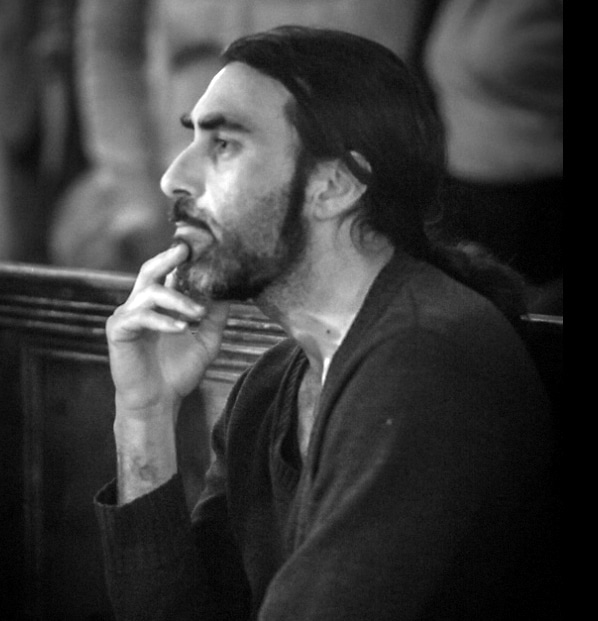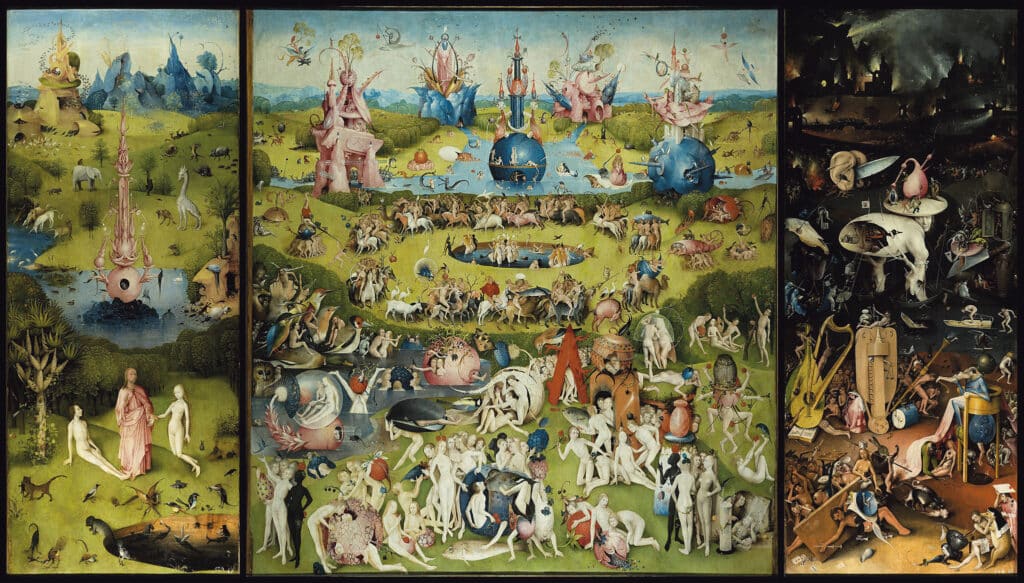
The shape of things
James Waller is an Australian born artist and poet based in West Cork. Through this column James explores the world of art, introducing the reader to major works of art and artists and reflecting on what makes them so engaging.
James offers a range of studio-based courses for children and adults in Classical painting, drawing and printmaking at Clonakilty School of Painting. See www.paintingschool.
jameswaller.org for details.

It is 1463, and Jheronimus van Aken is only 13-years-old, when fire devastates his city of Den Bosch. The fire marks him; he re-ignites it when he picks up a brush and begins his apprenticeship to his father as a painter. Whilst his brothers churn out workshop copies of ‘The Adoration of the Magi’, and other popular themes, Hieronymus joins, in his drawings, human body parts to animals and conjures flames devouring dark horizons. Inspired by medieval bestiaries, gargoyles and the forest which surrounds Den Bosch, Hieronymus dismembers all that he can see and puts it back together in strange and confounding ways. He is clearly beyond his brothers, and his images both exhilarate and frighten his father. The boy is fearless; he does not care if others cannot understand what emerges from his hand: for him the world is a divine puzzle and a beautiful trap, with humanity forever threatened by the flames of the devil. He sees into the invisible, and through the invisible he comes to life.
The centuries have since vindicated the determined vision and singular purpose of the young painter from Den Bosch, known in his lifetime, and since, as Hieronymus Bosch: the painter of fantastical landscapes and powerful visions, both devilish and divine. Many readers will know of his ‘Garden of Earthly Delights,’ a triptych in the collection of the Prado, in Madrid. It is a ‘world-scape’ in three panels, the left wing depicting Eden, with Christ between Adam and Eve, the centre panel depicting a sensual paradise of seeming harmony between man, woman, bird and beast (a medieval nudist festival), and the right wing revealing a hell-scape of divine punishment, presumably for those who have partaken in the sensual delights, depicted front and centre.
Why, one wonders, would one be punished for living in such perfect, heavenly accord, with nature? Read from left to right the triptych appears to espouse the central moral message of Christianity: that self-indulgence in the pleasures of the flesh grants an instant ticket to the fires of hell. The right hell-panel makes a mockery of the pleasure-seekers in the centre. To the neck of a giant mandolin a naked figure is tied and tortured; out of its sound hole rises a harp, upon which another naked figure is crucified. At its base, sheet music is printed on a male behind, looked upon by a reptilian ‘cantor’. It appears the arts are in league with the devil.
To the lower right, a naked woman on a spit is held by a giant rabbit over a fire. Directly below, a die is balanced by a severed hand, the palm skewered by a knife to a dish. A devil holds up a backgammon board in triumph, whilst playing cards fall from an up-turned table. Gambling, as we know, is a first class ticket to hell. Hello Satan.
To the right of the rabbit a woman sits, seemingly drugged, the dark arms of a vole-like creature around her. In front of her, and reflecting her image, is a dark convex mirror, which forms the rear-end of a kneeling green creature from whose ankles sprout branches. To the right of the woman a creature with the head of a bird devours people whole, only for them to fall out of its sack-like abdomen into a hellish hole below. Vanity and forbidden desire do not end well.
In the distance of this menagerie of fiendish wonders a city is aflame, its bridges over-run with Lucifer’s minions. Flame is rarely absent from Bosch’s world-scapes; from his very youth he knew its power. The irony, of course, is that Bosch was a painter, painting an image of wonders to seduce the eye; it certainly seduced the Spanish monarch who acquired it. Did those of the elite, granted to see the image, feel at any point that they were being tricked? Bosch, the painter, painting music and the reflected image (the convex mirror being a symbol, perhaps for art) as a pathway to damnation? Or were they simply lulled into a state of wonderment by his crystalline fountains which sprout up like flowery, crustacean-inspired minarets from his earthly, painted waters of Eden?
Was Hieronymus Bosch, in his Garden of Earthly Delights, in fact mocking the podium upon which the church stood, deriding its message of purity through abstinence by offering a banquet of visual delights? It is, of course, impossible to say. What is clear is the power that his triptych continues to exert, 600 years after its creation. It is singular, unique, and unrepentant of its strangeness.
The young Jheronimus van Aken, from Den Bosch, did not follow the crowd. He looked into the invisible, and through the invisible, came to life. His example encourages us today to follow the call of whatever star draws us on; to become full in the promise of our star’s realisation, to dance now with the delight of its form.


